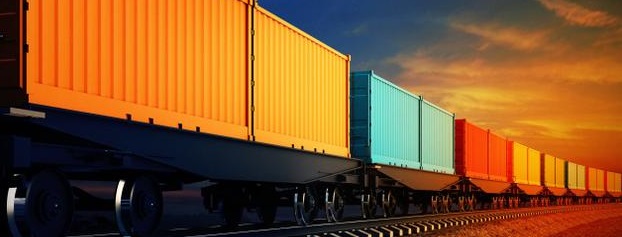
Transit reduced waiting
Last Friday, December 16, a container train with 112 TEU (20-foot containers) with General Motors auto parts was sent from Nakhodka-Vostochnaya station. The time of cargo delivery by rail to the destination – the Uzbek city of Asaka (Assake station), where the GM-Uzbekistan automobile plant is located, is ten days. Transit containers arrived at the Vostochny port from South Korea.
The peculiarity of this transportation was that the transit at the sea checkpoint took the minimum time – no more than a day. For comparison, at the beginning of 2016, the container's stay in Vostochny from the moment of unloading until the end of state control took an average of 5.6 days. Minimization of deadlines became possible thanks to the well-coordinated work of employees of the port, station, customs authorities and PJSC TransContainer at all stages of cargo transit.
"Due to the preliminary information about the cargo submitted to the customs post, the clearance procedures were shortened, its processing was carried out according to the direct variant of a ship-wagon with the exception of temporary storage in a warehouse," said Peter Silin, head of the branch of PJSC TransContainer on the Far Eastern Railway.
This technology, which operates on the basis of electronic document management, is increasingly resorted to by participants in foreign economic activity. If in August 2016, the share of preliminary information submitted to the customs post of the Vostochny Seaport from the total number of imported goods shipments was about 5%, then in November it was more than 55%, the chief state Customs Inspector for Public Relations reported. Nakhodka customs Natalia Sabadash.
Simplified cargo passage at the border is necessary to increase the competitiveness of the Russian transport system, says Peter Silin. Today, various transport schemes are being used to ensure transit, including bypassing Russia. For example, senders from South Korea, in addition to deep-sea routes, use China's transit capabilities.
The cargo first follows by sea to the Chinese ports (Dalian, Qinhuangdao, Tianjin), then along the railway network of the People's Republic of China - to the Kazakhstan checkpoint Dostyk. We should add that transit transportation along the Primorye-1 International Transport Corridor (MTK) is now gaining activity. They are carried out through the Suifenhe - Grodekovo border crossing connecting the Chinese province of Heilongjiang and Primorsky Krai. The transit time of the cargo on the territory of Russia does not exceed 13 hours. For 11 months, about 2 thousand TEU were transported in this message.
This is eight times higher than the same indicator last year. At the same time, the largest volume of transit traffic was recorded in November – 510 TEU. The nomenclature of transit is mainly represented by lumber, wood products, as well as agricultural goods.
According to the results of 2016, transit traffic through the Far Eastern Railway will amount to more than 2.6 thousand TEU, the Far Eastern Territorial Center of branded Transport Services predicts. The TCFTO expects further growth of the transit container flow next year. The production capacity of the GM-Uzbekistan plant in Asaka is 230 thousand cars per year. Currently, the company produces about ten models.
This fall, production of the Chevrolet Cobalt sedan began here. The volume of production of the new model will be more than 120 thousand cars per year, of which at least half will be sold in the CIS countries.

 Заказать
Заказать Personal
Personal

















